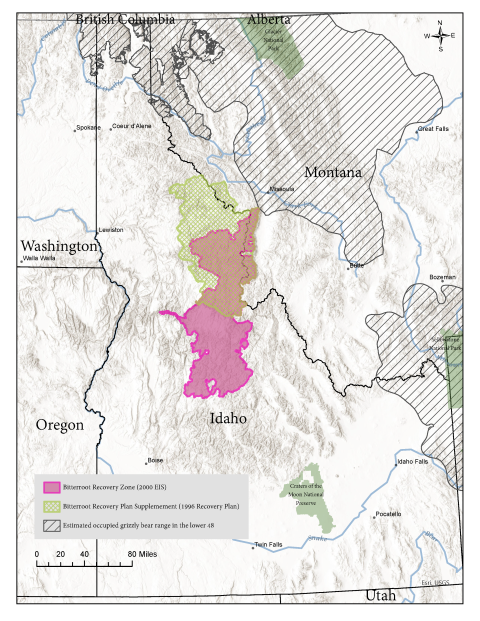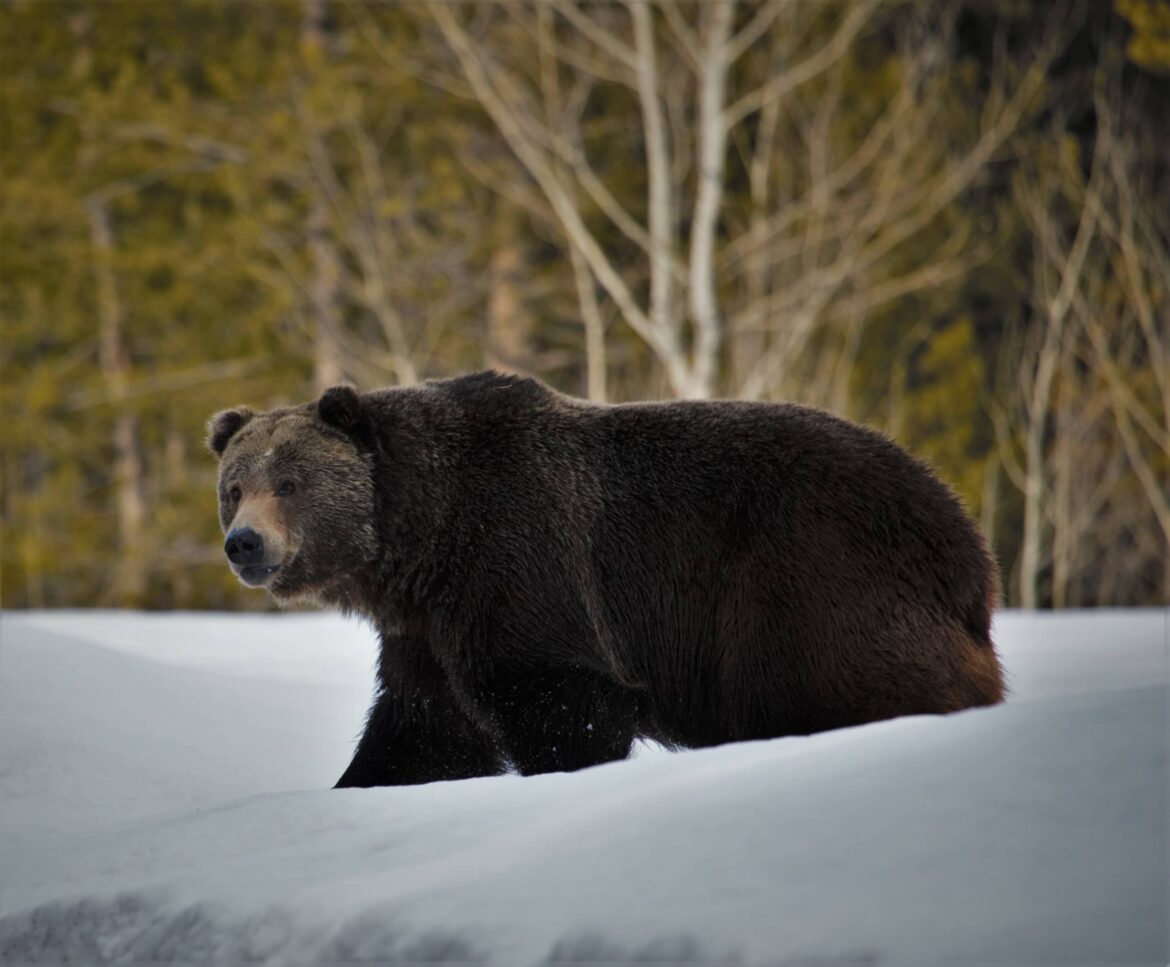The U.S. Fish and Wildlife Service is announcing a public scoping period to consider options for restoring grizzly bears to the Bitterroot ecosystem. The Service will assess the potential impacts of proposed restoration options in an environmental impact statement and is asking the public to weigh in on the issue.
The Bitterroot ecosystem is one of the six identified grizzly bear recovery zones in the lower 48 States. Although individual grizzly bears have been documented in the Bitterroot Ecosystem, no established population — defined as having two or more breeding females or one female with two consecutive litters — currently exists in this recovery zone. Grizzly bears are listed as a threatened species in the contiguous U.S.

In November 2000, the Service issued a final EIS, record of decision, outlining plans for reintroducing grizzly bears to the Bitterroot ecosystem. However that plan was never acted on.
In early 2023, the U.S. District Court for Montana ruled the Service unreasonably delayed implementing certain actions in the decision. The court ordered the Service to supplement the EIS and, if warranted, issue a new rule.
The Service chose to complete a new EIS and ROD based on the best available science and information because the science and information used to inform the original action are over two decades old. The court ordered a final plan by the fall of 2026.
The grizzly bear restoration EIS in the Bitterroot Ecosystem will analyze alternatives for restoration by examining potential effects on the human environment, addressing management approaches for bear-human conflicts, assessing considerations for grizzly bear connectivity between recovery zones, and incorporating other relevant information regarding impacts.
A key decision for the Service will be whether to manually reintroduce bears into the ecosystem, or manage conditions to allow grizzlies to naturally settle in the area themselves – something the service believes may happen within 15 to 20 years.
The service will hold three virtual public information sessions in February and accept comments on what should be considered in its restoration plan until March 18.
###
U.S. Fish and Wildlife Service/Montana Public Radio


